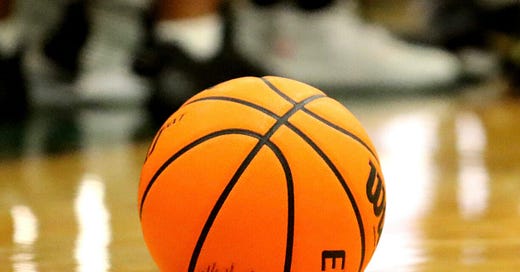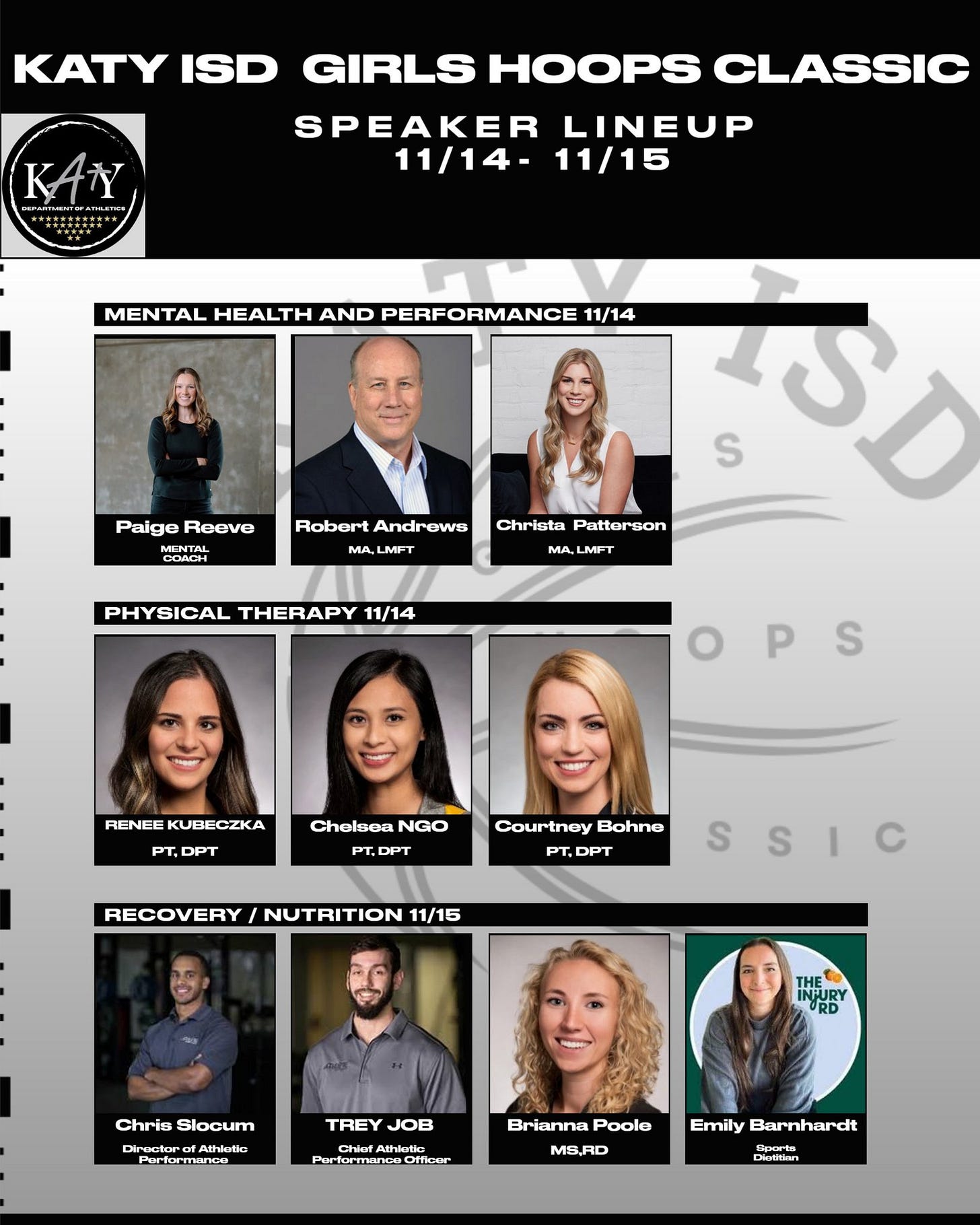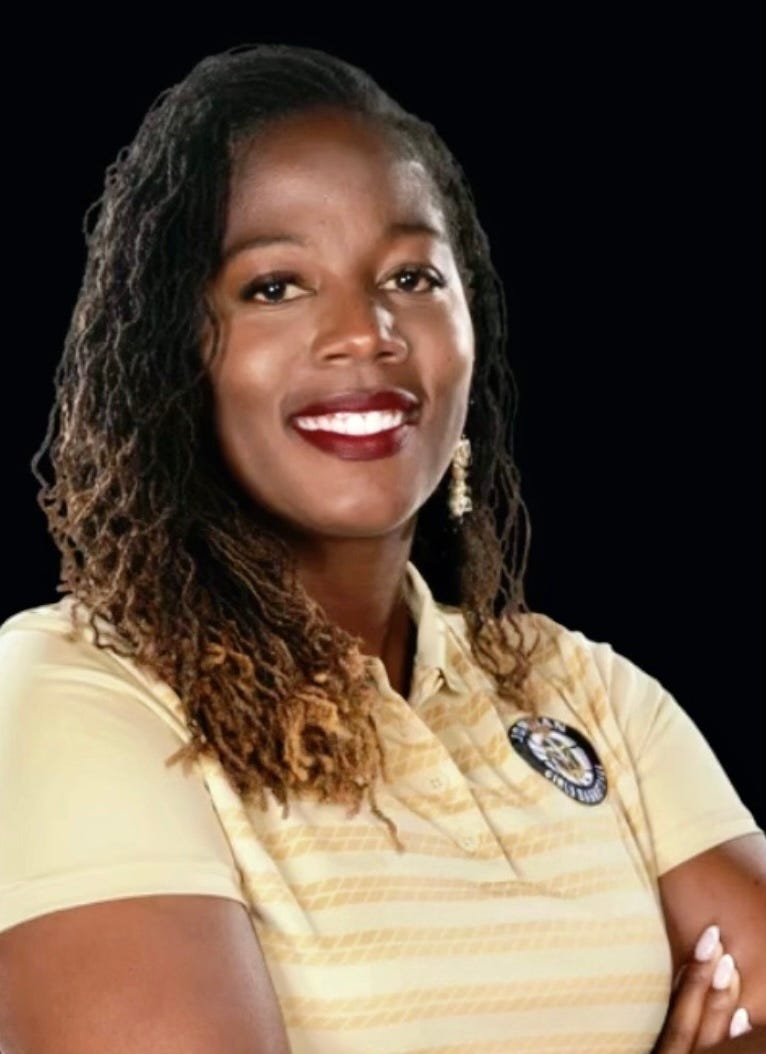Girls Basketball: Mental health among emphases for Katy ISD, Memorial Hermann in tournament partnership
Sports psychology, nutrition and injury prevention key points at this week's 32-team Katy ISD Classic girls basketball tournament
Jordan girls basketball coach Shalesha Pierce’s eighth-grade son recently decided to play sports. Watching her son assert himself in the competitive world of youth sports, while still navigating the death of his father in 2020, opened Pierce’s eyes.
“In the grand scheme of things, sports can seem very small within the realm of the things these kids are going through,” Pierce said. “But the fact of the matter is (sports) is a lot of kids’ lifeline. Their means to gain success, their means to gain scholarships, so it’s still something they have to continue to be successful in.
“We can’t ignore the life issues they’re walking through and act like they’re not existing and affecting the way they perform on the court. We can’t stop life things from happening but what we can do is teach our kids to handle life things better.”
Pierce is doing her part, initiating a partnership with Memorial Hermann, longtime healthcare provider for Katy ISD, for this year’s Katy ISD Classic girls basketball tournament. The 32-team tournament will be held at Jordan, Seven Lakes and Tompkins high schools Thursday, Friday and Saturday.
Speakers on behalf of Memorial Hermann will host talks on Thursday and Friday during uninterrupted breaks between games at the tournament. The conversations will center on sports psychology, nutrition and injury prevention.
It is the first venture of its kind for the district.
“Shalesha reached out to us and started working with some of my team, as far as getting everyone involved,” said Craig Garrison, director of research and education sports medicine at Memorial Hermann. “Athletic trainers, physical therapists. From there, we started looking at different opportunities where we might be able to engage with them.”
Garrison said Memorial Hermann had a strategy meeting two weeks ago reviewing its healthcare system. Within the next 5-10 years, one of the primary emphases will be sports psychology for all ages, from youth to professional athletes.
“For female athletes, in general, I’ve noticed the stakes of all the games we play have really grown,” Pierce said. “Kids are coming in way more talented at a younger age, which means, since the competition is raised, the expectations of the athletes have raised. What we’re noticing is a lot of athlete burnout, struggling to deal with the high pressures that come with succeeding in their individual sports. It requires a sense of multi-tasking and being able to overcome hard things at an early age.”
Garrison said two factors play a role in manufacturing pressure kids deal with at a young age when they start playing sports.
First and foremost is social media, and how much kids use it. Whether a kid believes they are good enough, or even belong on the court or field, often stem from online; kids comparing themselves to their peers based on what they might see on TikTok or Instagram, or any other social media platform, is a dangerous, albeit common, proposition.
The other is parents.
“There’s this constant pressure from the parents that sometimes they don’t even realize they’re putting. They want them to perform at their highest level,” said Garrison, a parent of four kids ages 10, 12, 14 and 16 who play sports in Katy ISD.
Garrison said parents can start accentuating the process, and not so much the outcome or results, of athletic competition to help ease the burden on kids.
“Things are competitive in Texas,” Garrison said. “It’s the mentality that you have to be the best, and it starts at the lower levels with the little leagues. What we’ve learned is one of the best things you can do as parents is encourage them. Focus on the process. Have fun, get better and play hard.”
Proper nutrition will also be addressed at this week’s sessions. Unique lower extremity biomechanical testing will be done, using forceplates that are used for testing professional and collegiate athletes.
“We can provide some education to them from an injury prevention and nutrition standpoint, and also provide them with some biomechanical screening to identify any individuals who might be at risk for injury,” Garrison said.
As a girls basketball coach, Pierce said she sees young ladies who endure a lot of body changes as they enter high school. Managing nutrition and understanding injury recovery are critical as they learn and adapt to their bodies.
Pierce sees a lot of ACL injuries because of where hips are aligned. Young ladies can get hurt from being overworked, not knowing how to properly recover and what that means for the body.
Kids who specialize in a sport early in their athletic careers often don’t develop the full range of motion of strength within the body.
“Teaching kids the importance of those things, and for parents hearing those things early, could really limit injury or help kids stay healthy for longer periods of time,” Pierce said. “Female athletes can be more confident about the nutrition they’re putting into their body, and their body images.”
Pierce admits not a lot of time is spent on the mental aspect of high school athletics. There is almost an expectation from coaches that kids will show up on campus mentally tough and resilient, knowing how to overcome.
“And it’s not things they normally encounter or can learn unless they’ve been in that situation,” she said.
Pierce is hoping this week’s training is a step in addressing significant concerns and helps kids respond better when difficult situations do occur, on or off the court.
“Teaching them ways to manage those types of stresses isn’t a bad thing for them to have practice on,” Pierce said. “Giving kids those tools ahead of time.”
If student-athletes take away one thing from this weekend, Garrison hopes it’s the understanding they are not alone.
“There are people out there that care about them as individuals, not just athletes,” he said. “Hopefully, they see that there are resources out there to help them. Someone struggling with mental health issues or anxiety, hopefully they realize there’s help.”






